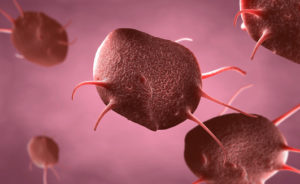Platelet transfusions are not always effective at preventing bleeding in patients with inherited and acquired platelet disorders such as Glanzmann’s thrombasthenia (GT; integrin αIIbβ3 dysfunction), Bernard-Soulier syndrome (BSS; glycoprotein Ib/V/IX dysfunction), and patients with RASGRP2 mutations. Integrin αIIbβ3, glycoprotein Ib/V/IX, and RASGRP2 are all key players in platelet activation and clot formation. In order to investigate why platelet transfusions have variable effectiveness, researchers assessed mice with defects in each of the proteins’ genes and used real-time imaging of hemostatic plug formation. In Rasgrp2-/- and “GT-like” mice, transfusion of wild-type platelets was ineffective unless the ratio of wild-type platelets to defective platelets was ~2:1. However, “BSS-like” mice or thrombocytopenic mice required very few wild-type platelets to normalize hemostasis and form a clot after laser injury. Additional studies in mice confirmed that Rasgrp2-/- or “GT-like” platelets compete with normal platelets for binding sites and incorporate loosely into the hemostatic plug; however, BSS-like platelets showed poor binding and incorporation into the hemostatic plug. These studies suggest that dysfunctional platelets can interfere with hemostasis by at least two mechanisms—competition for glycoprotein binding sites at the injury site or poor incorporation into the hemostatic plug. Further studies are required to better understand the best platelet transfusion ratios for these disorders in humans.
Reference:

